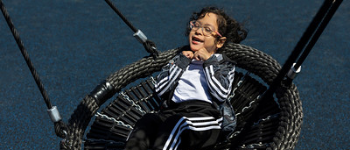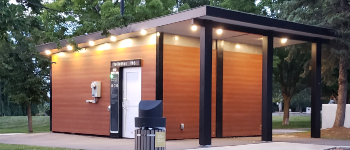How Long it Takes to Build an Outdoor Public Playground
Jul 27







May 31
When planning the construction of a new playground, there are many things to consider — from surfacing to amenities, every aspect matters. But if you were to ask kids what part matters most, they’d definitely say it’s the equipment. Duh!
There are lots of different types of playground equipment out there, and we’re here to walk you toward your best options to earn happy visitors. In this blog, we’ll discuss what you should look for in suitable playground equipment, the different types available and how to buy them.
Equipment is the star of your playground. It gives children a place to exercise, play, socialize, learn and grow. Physical benefits of including playground equipment at your park include:
Playground equipment also helps children with their emotional, social and intellectual development. Playgrounds allow children to engage in free play, which helps them learn to communicate with other kids and practice conversation and vocabulary. During free play, they follow each other’s rules, share, and take turns — increasing their ability to read body language and understand someone’s tone of voice.
Lastly, playgrounds build a sense of community in your neighborhood or town. It’s a place for people to gather, socialize and learn more about the world around them.
Choosing a certain type of playground equipment is going to depend on your budget. There are three main types to choose from: standalone structures, inclusive playground structures and themed playscapes.
Standalone structures include:
Many of these standalone structures come in a variety of shape and size options for children of all abilities and ages.
Inclusive playground structures open your playground to children of all ages and abilities. They’re accessible and inclusive and offer equipment such as musical instruments, ramps, inclusive swing seats, sensory wave climbers, and multi-generational play activities.
Themed playscapes go above and beyond and transform your playground into a magical wonderland. We’ve helped schools and communities build playgrounds that look like shipwrecks, jungles, outer space, gardens and more.
When choosing playground equipment, go for the best quality for your budget. Choosing lower-quality structures may mean more upkeep and breakage that can lead to trips, snags or bodily injury.
The U.S. Consumer Product Safety Commission shares this safety checklist:
Before you buy any playground equipment, there are many factors to consider. You don’t want to buy a piece of equipment before you know whether it’ll fit in your space and your budget. Here are a few things to consider before you make a purchase.
Once you have all this figured out, choose a playground equipment provider with proven experience and a portfolio to prove it. At MRC, we have 40+ years of experience building playgrounds that are safe, fun and memorable.